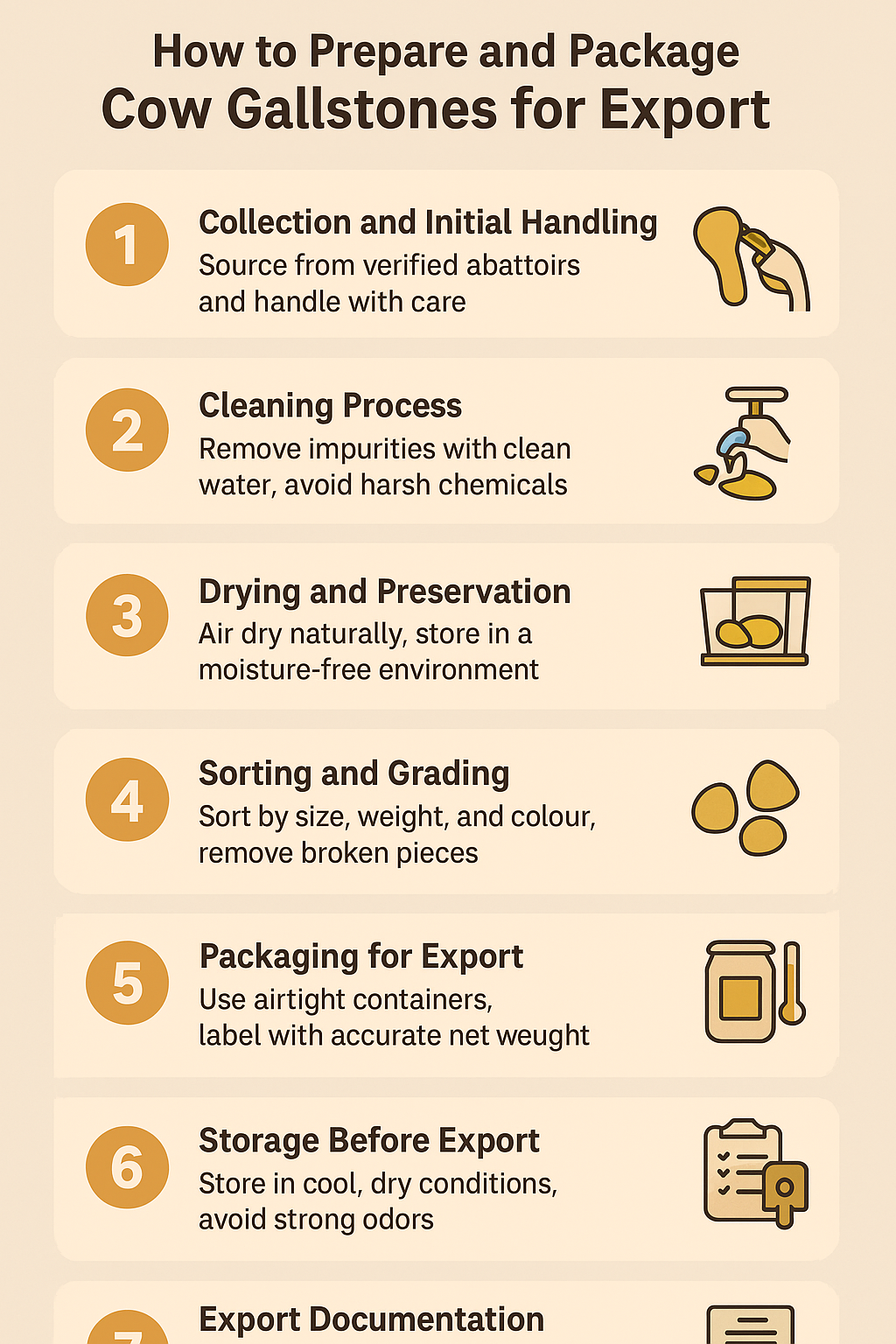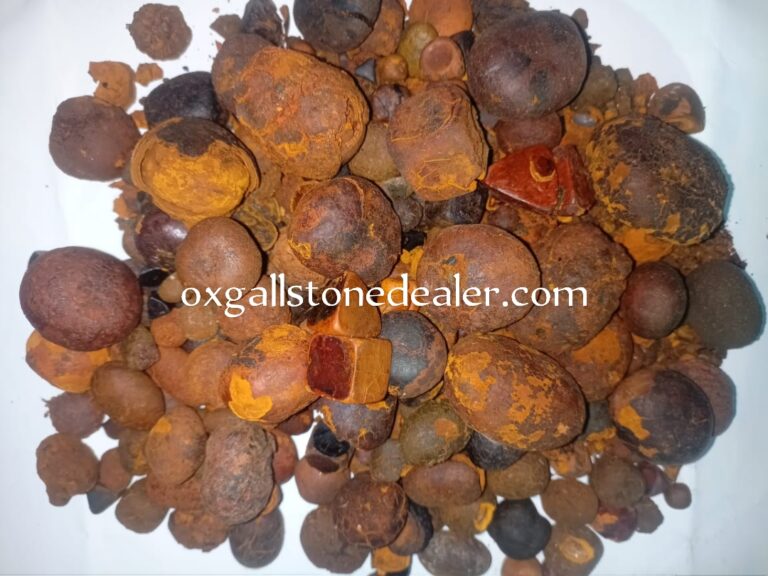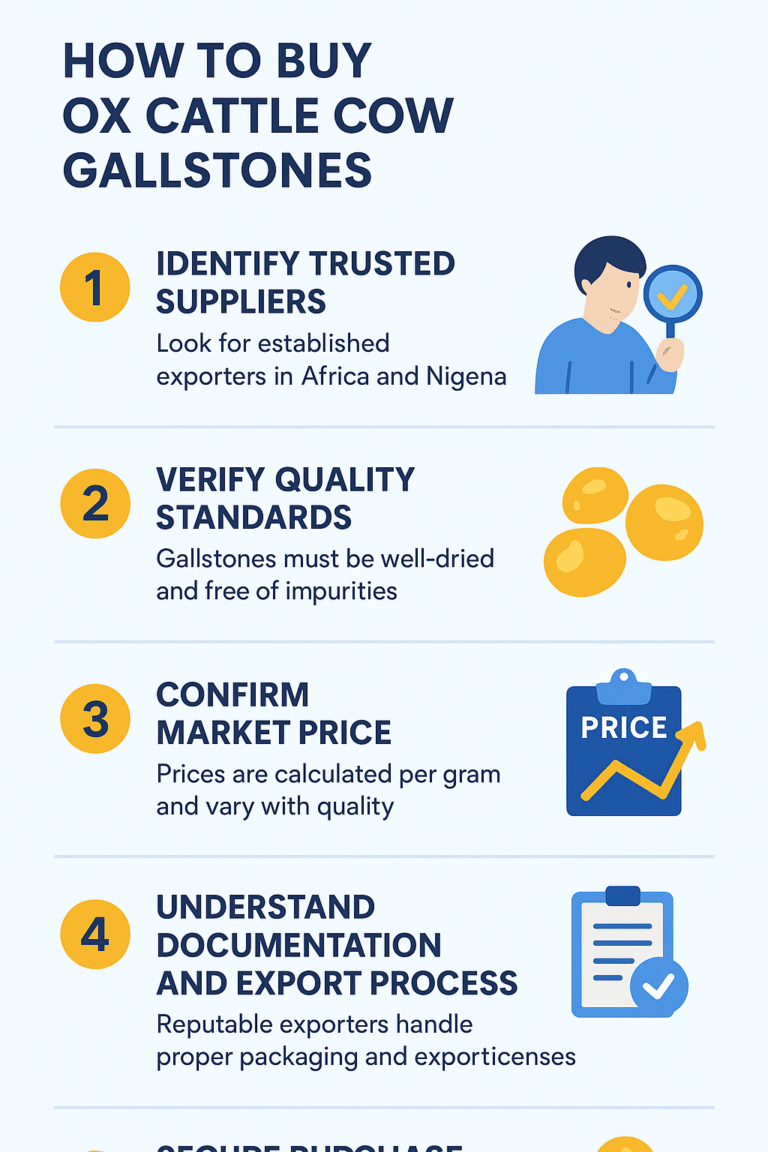How to Prepare and Package Cow Gallstones for Export
How to Prepare and Package Cow Gallstones for Export
Exporting ox, cattle, or cow gallstones requires proper preparation, cleaning, and packaging to ensure maximum value and compliance with international standards. Poor handling can reduce the quality, lower the price, or even result in rejected shipments. Below is a step-by-step guide on how to prepare cow gallstones for export.
1. Collection and Initial Handling
- Source from verified abattoirs – Only collect gallstones from freshly slaughtered healthy cattle.
- Handle with care – Avoid breaking or crushing gallstones during removal from the gall bladder.
- Separate immediately – Keep gallstones separate from meat, bile, or any other animal by-products.
2. Cleaning Process
- Remove impurities – Gently wash off blood, bile, or tissue residues using clean, room-temperature water.
- Avoid harsh chemicals – Do not use soap, detergents, or preservatives, as this lowers export quality.
- Air dry properly – Place gallstones on a clean, dry surface (preferably on mesh trays) and let them dry naturally in a dust-free environment. Avoid direct sunlight, which can reduce quality.
3. Drying and Preservation
- Natural drying – Allow gallstones to dry slowly until they lose moisture and harden.
- Storage during drying – Ensure good ventilation to avoid mold or contamination.
- Moisture-free environment – The final product should be dry and firm; moisture reduces shelf life and export value.
4. Sorting and Grading
- By size and weight – Larger and heavier gallstones usually attract higher prices.
- By colour – Bright yellow to golden stones are graded higher than dark or dull ones.
- Remove broken pieces – Keep whole stones separate from smaller fragments, as prices differ.
5. Packaging for Export
- Use airtight containers – Pack gallstones in moisture-free glass jars, plastic containers, or vacuum-sealed bags.
- Weight consistency – Label packaging with accurate net weight.
- Bulk packaging – For large exports, smaller containers can be placed into sealed cartons or metal tins.
- Avoid contamination – Packaging materials must be clean, food-safe, and free from chemical residues.
6. Storage Before Export
- Cool, dry conditions – Store gallstones in a controlled environment away from heat, moisture, or pests.
- Avoid strong odors – Keep away from chemicals, spices, or substances with strong smells that can affect quality.
- Short-term holding – Do not store gallstones for too long before shipping; buyers expect freshness.
7. Export Documentation and Compliance
- Work with export agencies – Ensure compliance with the buyer’s country regulations.
- Certificates – Veterinary health certificates, fumigation certificates, and quality assurance documents may be required.
- Customs clearance – Follow proper export procedures to avoid shipment delays.
Final Note
Proper preparation and packaging of cow gallstones are critical for maintaining quality and maximizing value in international trade. Clean handling, correct drying, airtight packaging, and compliance with export regulations will ensure your gallstones meet international buyer standards and fetch competitive market prices.
👉 Want to sell your cow gallstones for export? Contact us today for instant evaluation and fair market pricing.


